Thomas & Alexander Levy: A Dialog Between Art Generations
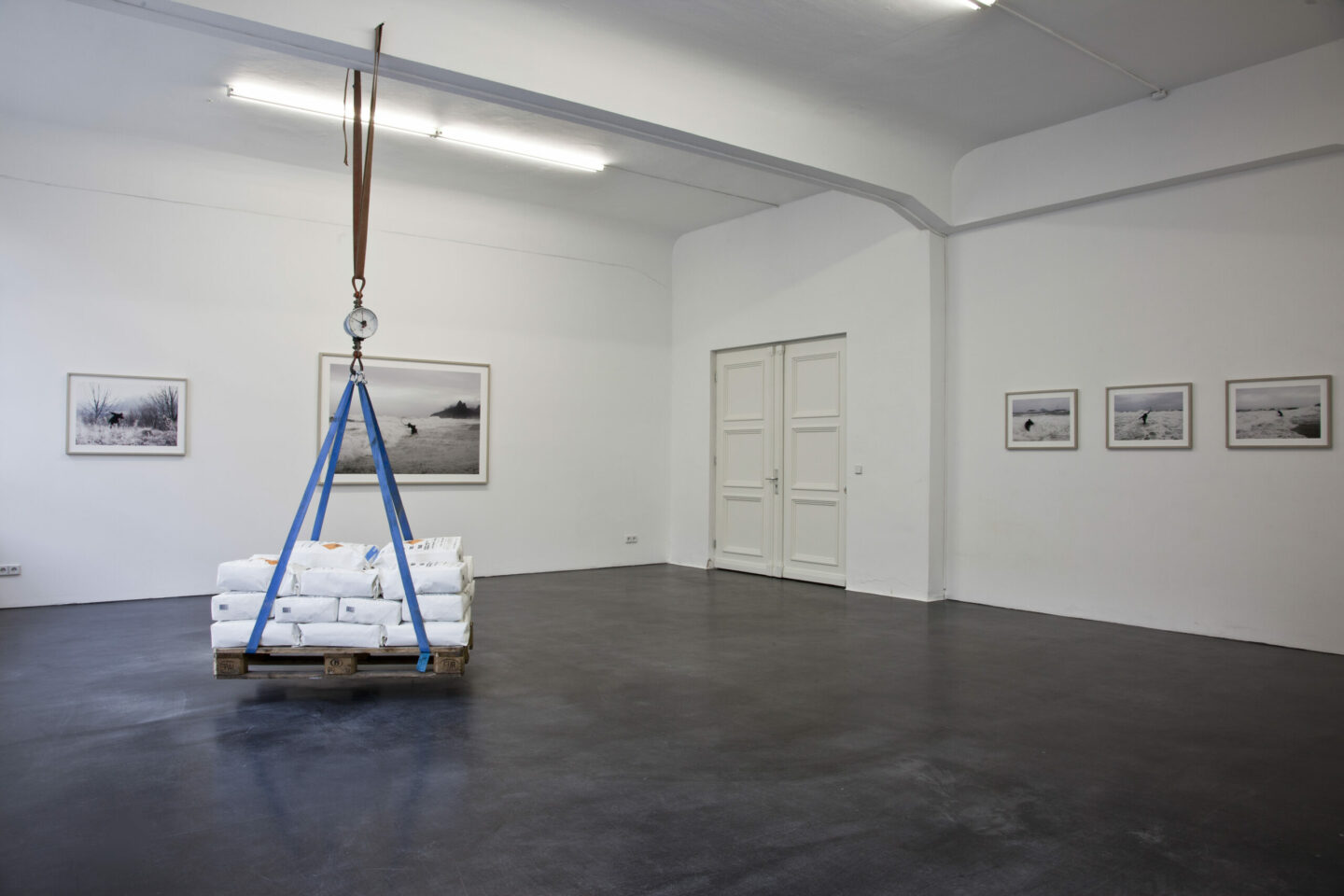

Words: Chris Erik Thomas.
Unique traits stick like glue in the double-helix of every family’s genealogy. In the case of the Levy family, it’s clear that their DNA is imbued with a passion for art. It was in 1970, now over half a century ago, that Thomas Levy opened a gallery in the heart of Hamburg. For decades, he steered the gallery through an ever-shifting array of positions on contemporary art – from Surrealism and Pop Art to Nouveau Réalisme. It was this environment and, more specifically, the array of artists who befriended Thomas and his wife, Traute, that served as the backdrop for his son Alexander’s upbringing. While Thomas and his wife hosted dozens of exhibitions at the gallery, their home became host to the likes of Meret Oppenheim, Man Ray, and Daniel Spoerri.
It’s no wonder that 42 years after his father opened LEVY Galerie, Alexander would open his own namesake gallery in Berlin in 2012. As the old idiom goes: Like father, like son. For the last decade, artists from around the world – including Spain, Israel, and Russia – have shown stunning works of contemporary art at both LEVY Galerie and alexander levy, resulting in a steady stream of positions unique to their respective galleries.
As Thomas and Alexander navigated issues both sociopolitical and artistic in nature, including a global pandemic that has irrevocably transformed the art world, it became time for the natural next step in their respective journeys as art curators: opening a shared gallery space. In a historic moment for the family, as well as the wider German art scene, LEVY Galerie and alexander levy have finally united in Berlin’s Moabit district at Alt Moabit 110. The new space will kick off with an inaugural exhibition of works by Meret Oppenheim, Man Ray, and Daniel Spoerri from LEVY Galerie, as well as a politically-charged video installation by Russian-Austrian artist Egor Kraft titled “Lies, Half-Truths & Propaganda [The Bad, the Worse, and the Worst]”.
After participating in Art Düsseldorf and ahead of their opening for Gallery Weekend Berlin (read our guide here), Thomas and Alexander Levy sat down with Chris Erik Thomas for a wide-ranging and generation-spanning discussion on the role of art in their family, the contrasting art scenes in Berlin and Hamburg, and how their new shared gallery space was formed.
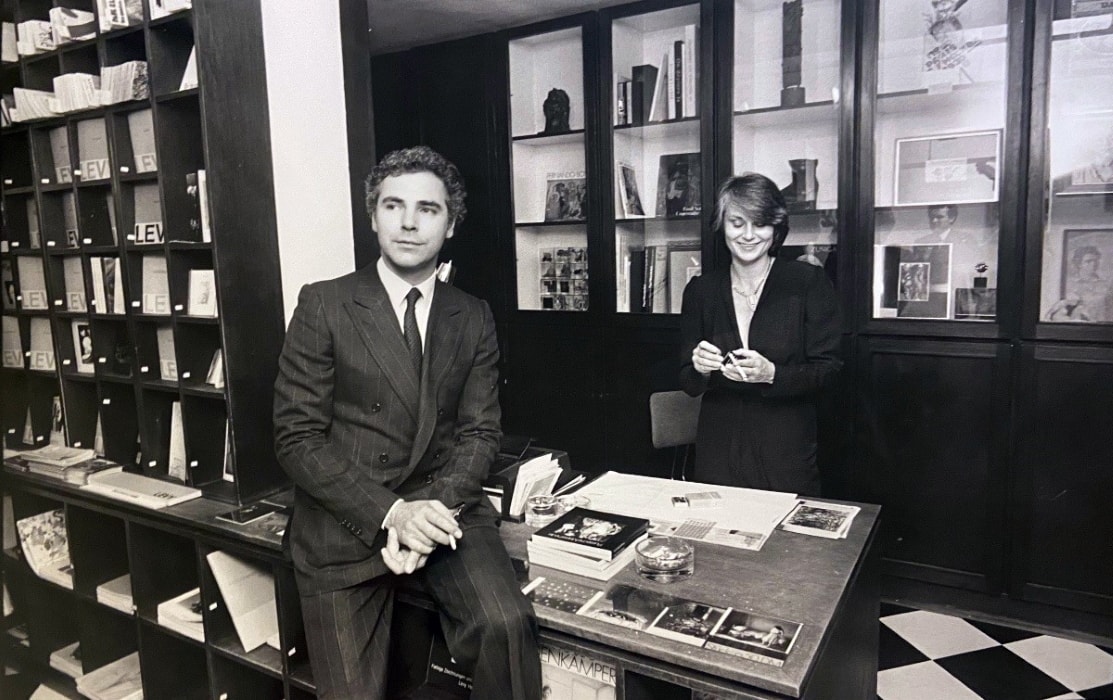
Traute and Thomas Levy, 1976. © 2020 alexander levy.
LEVY Galerie has been open since 1970, while Alexander Levy was founded in 2012. For Alex, what lessons were passed down from your father? And for Thomas, what have you learned from your son?
AL (Alexander Levy, *1984): I learned from my father, above all, the importance of personal and private relationships with the artists you want to work with successfully. That is, to understand that successful collaboration needs human, friendly roots. I observed how he surrounded himself with personalities and artists with whom he was also friends. After all, it’s not just about goods and objects being traded, but about people and ideas being exchanged.
TL (Thomas Levy, *1947): I’m still learning from my son that you have to hang exhibitions differently, i.e., that the visual presentation, the exhibition design, has a direct influence on the narrative of the works and that you consciously create a dialog context.
Alex, your mother, [Traute] also played a key role in your family’s gallery business. What qualities did she pass on to you that help you today as a gallery owner?
AL: My mother was primarily involved in the personal relationships within the gallery business, and with her warmth, she helped shape the atmosphere at the openings and events. She also took care of the order and structure in the preparations and the day-to-day business and kept an eye on the big picture – also economically.
Meret Oppenheim, Man Ray, Daniel Spoerri – are these names you grew up with, Alex? You might have known Oppenheim but probably don’t remember her yourself; nevertheless, with Daniel Spoerri you indeed have a close connection like your father?
AL: I always say that Meret Oppenheim used to read to me, but that’s not true at all, so I’ve got that wrong in my memory. I know Daniel Spoerri closely, of course, and enjoy spending time with him. He is incredibly charming and funny, and my parents are very attached to him.
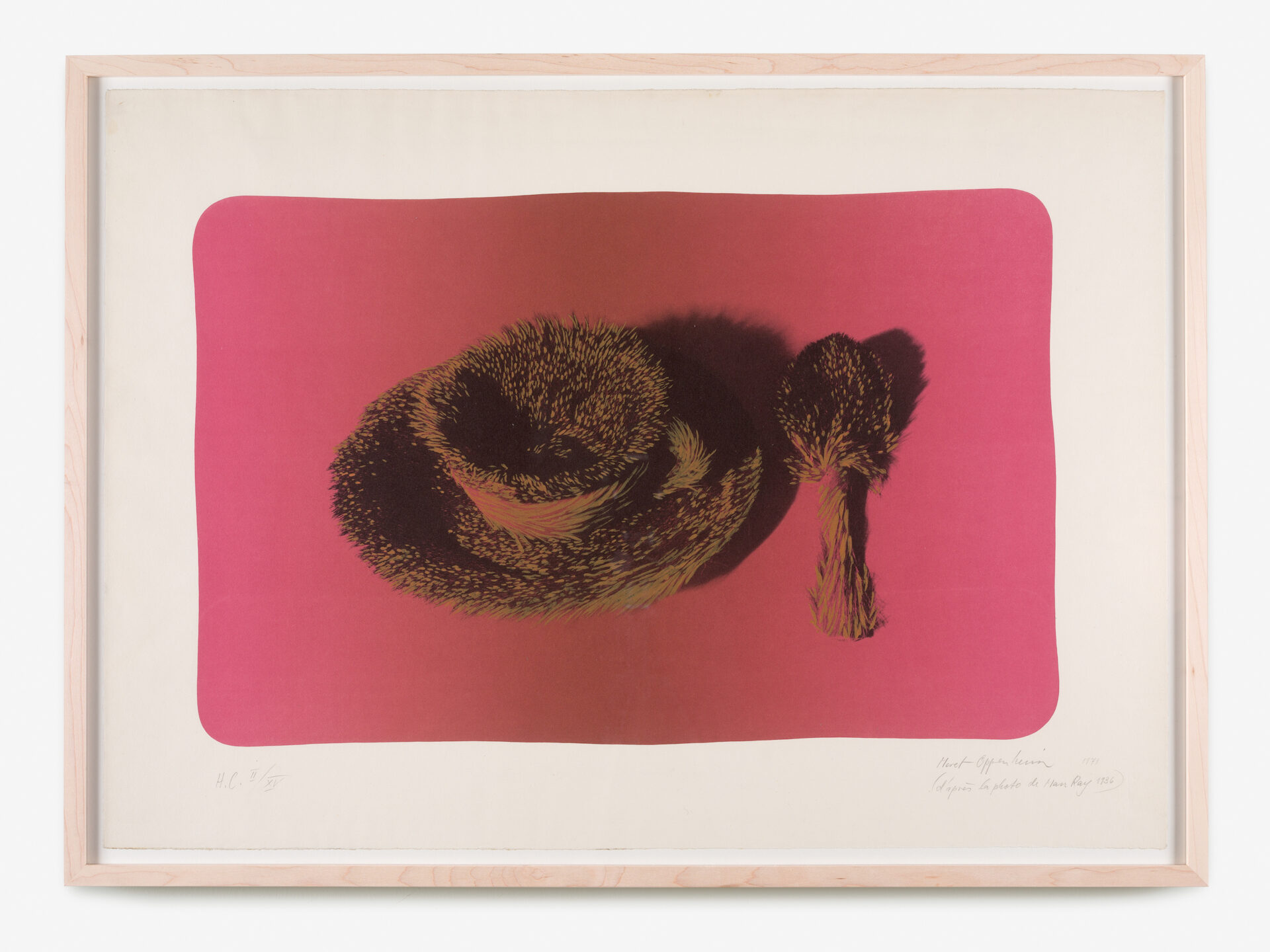
Meret Oppenheim. "Poster Fur Cup (fond rouge)", 1971. Offset (after photograph by Man Ray). 53 x 76 cm. Photo: Henning Rogge. Courtesy: LEVY Gallery, © ProLitteris, Switzerland.
In Berlin, there is [an art scene]; in Hamburg, there is none.
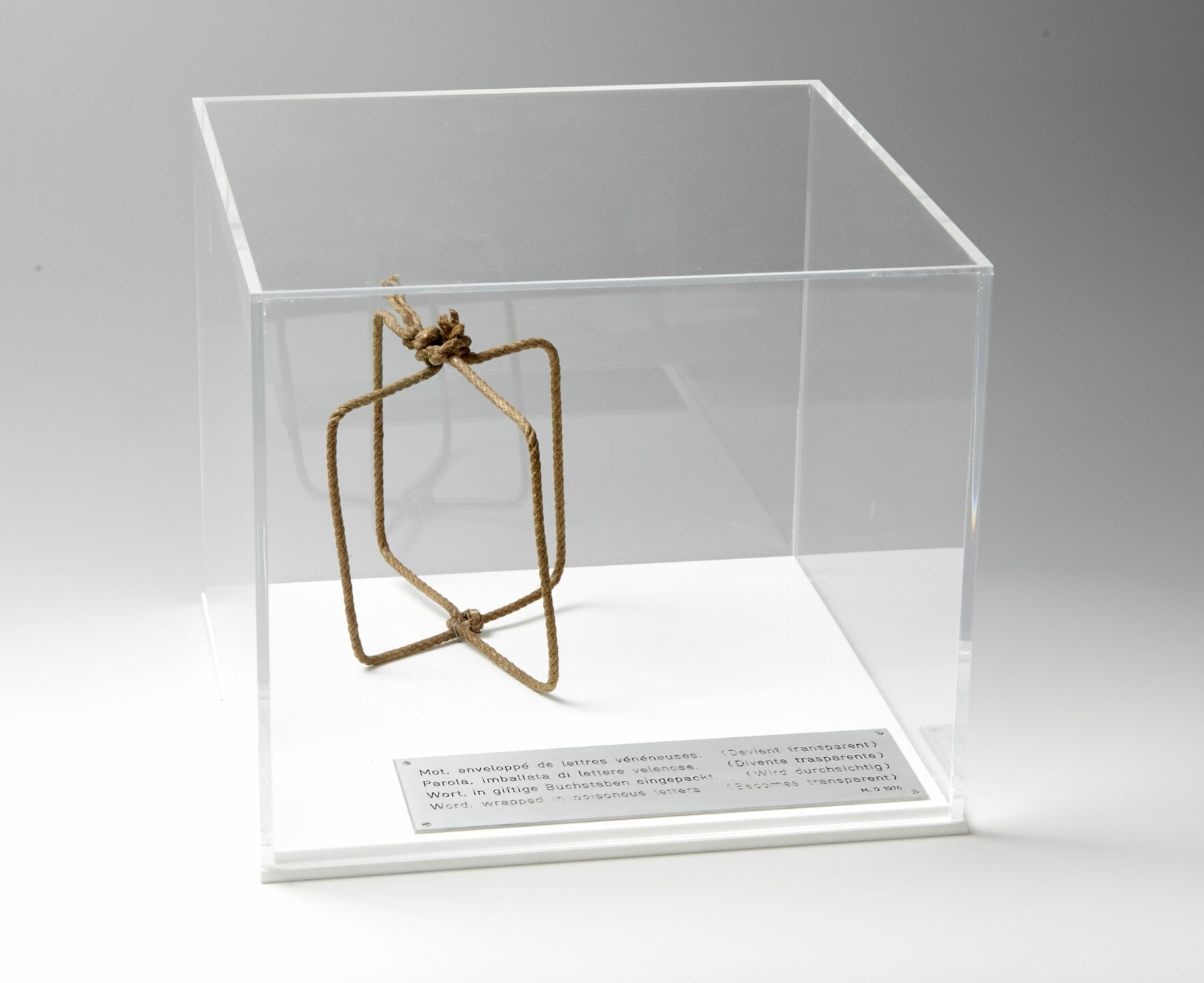
Meret Oppenheim. "Word, wrapped in poisonous letters (becomes transparent)", 1970. Object: string, engraved brass plate. 31 x 14 x 39.5 cm. Photo: Henning Rogge. Courtesy: LEVY Gallery, © ProLitteris, Switzerland.
Art is obviously a core foundational element for your family, but can you speak on how art and the art world impacted both of you?
AL: Because I grew up in art, it was elementary for me to do something else that was creative, so I first immersed myself in the world of music and was abroad. But then I returned to art because it is a direct filter of society and current issues. Here, ideas are implemented to significantly impact our understanding of our environment and human structures.
TL: For me, art has always been part of life, and I can’t imagine my everyday life without it.
What is the key element to a good piece of art?
AL: Art must ask questions and abandon new perspectives.
TL: Art must be innovative and reflect the time in which it was created.
What are some of the biggest changes you’ve seen within the art world since opening your respective galleries?
TL: When I first opened my gallery, the social resonance for art felt much less [important]. Today it is enormous.
AL: …whether that’s just because of the artistic-creative output or the investigative interest?
How has the gallery business changed over the last decades? What are new challenges – especially in terms of online presence?
TL: When I started in 1970, this digital presence didn’t exist. That meant that customers mainly came by the gallery space in the past, and personal encounters were crucial for buying art. Nowadays, internet sales have become very important and [have been] boosted even more by the pandemic and limited mobility.
AL: Visibility and reach have increased significantly due to the digitalization of the art market. Online presence as mediation has become essential for a gallery. In addition, it has made communication about art easier and the barrier to buying art lower.
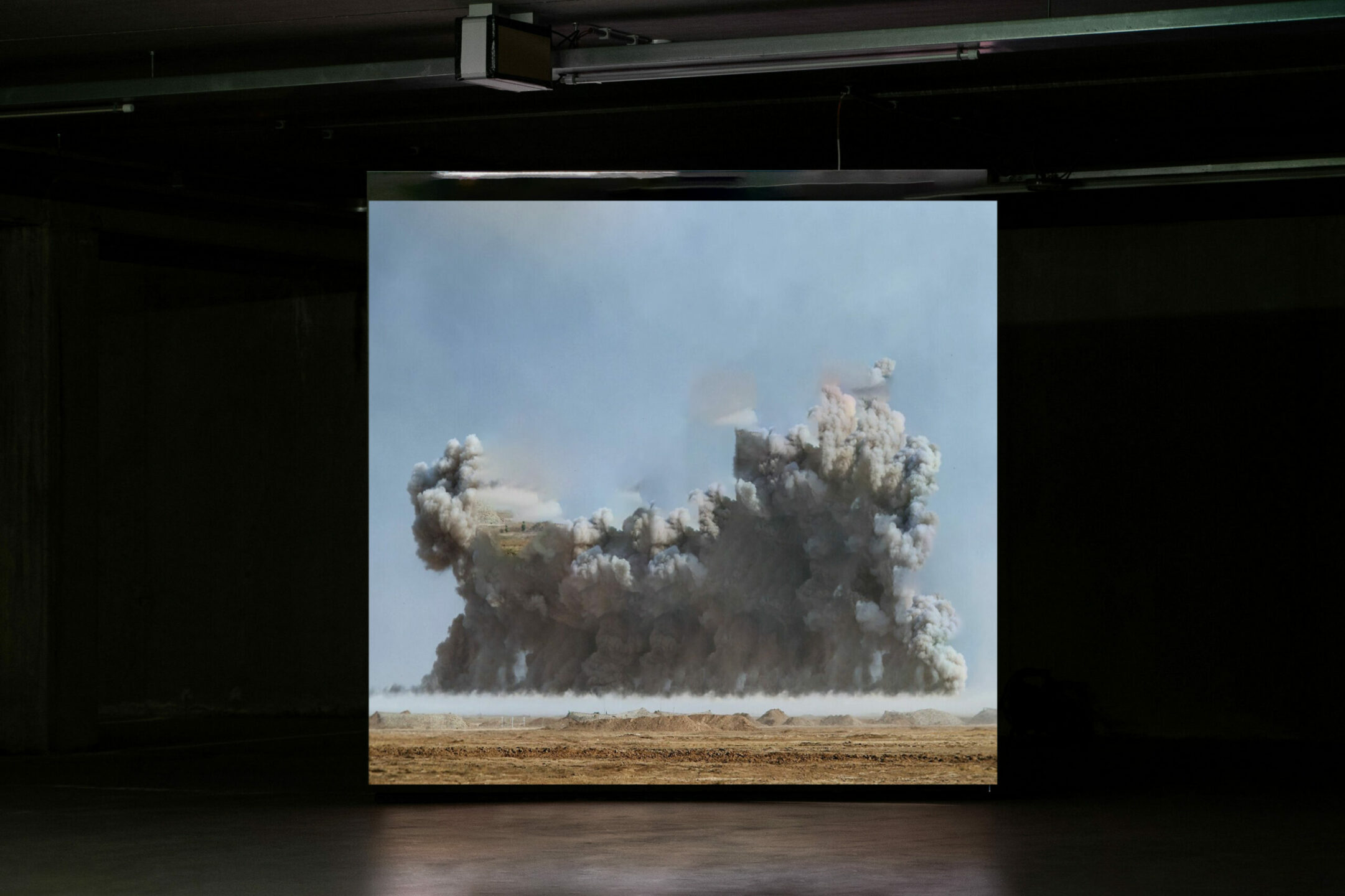
Egor Kraft. "Semi-truth is the Perfect Lie", 2022. Generative Computer installation. Courtesy alexander levy.
In your opinion, what distinguishes the younger generation of collectors from your older generation?
TL: In the past, collectors were much more closely tied to a gallery, were advised and accompanied by their gallery owners in building up their art collection, and remained loyal to them. Nowadays, buying art has become a social phenomenon: according to trends and hypes, people buy more with their ears and eyes.
Isn’t that every father’s dream – a son who will follow in your footsteps and take over your business one day?
TL: YES!
The new space in Moabit is a joint venture for both of you. How did this come about? Have you always planned to start a space that ties together both of your galleries?
TL: Of course, we have always planned a future joint space together. For years, we have been looking for suitable rooms to ultimately pass on the future of my gallery – which has existed for over 50 years – to the new generation and to continue the long-standing collaboration with the important artists of both galleries as well as the care of the estates – also with economic success.
AL: We had already heralded the meshing of the two galleries in exhibition collaborations, for example, when we juxtaposed Dieter Roth from my father’s program with young artists here in our spaces. Or with the solo exhibition of Daniel Spoerri and also Meret Oppenheim at our gallery in Berlin, where we wanted to look at their oeuvre from a new perspective. My father’s artists have hardly ever been represented in Berlin.
TL: And Berlin is one of the art centers in Germany and is simply more international. In Hamburg, there are simply too few people who can see that.
What distinguishes the Berlin art scene from that in Hamburg?
AL + TL: Provocatively speaking: In Berlin, there is one, in Hamburg, there is none.
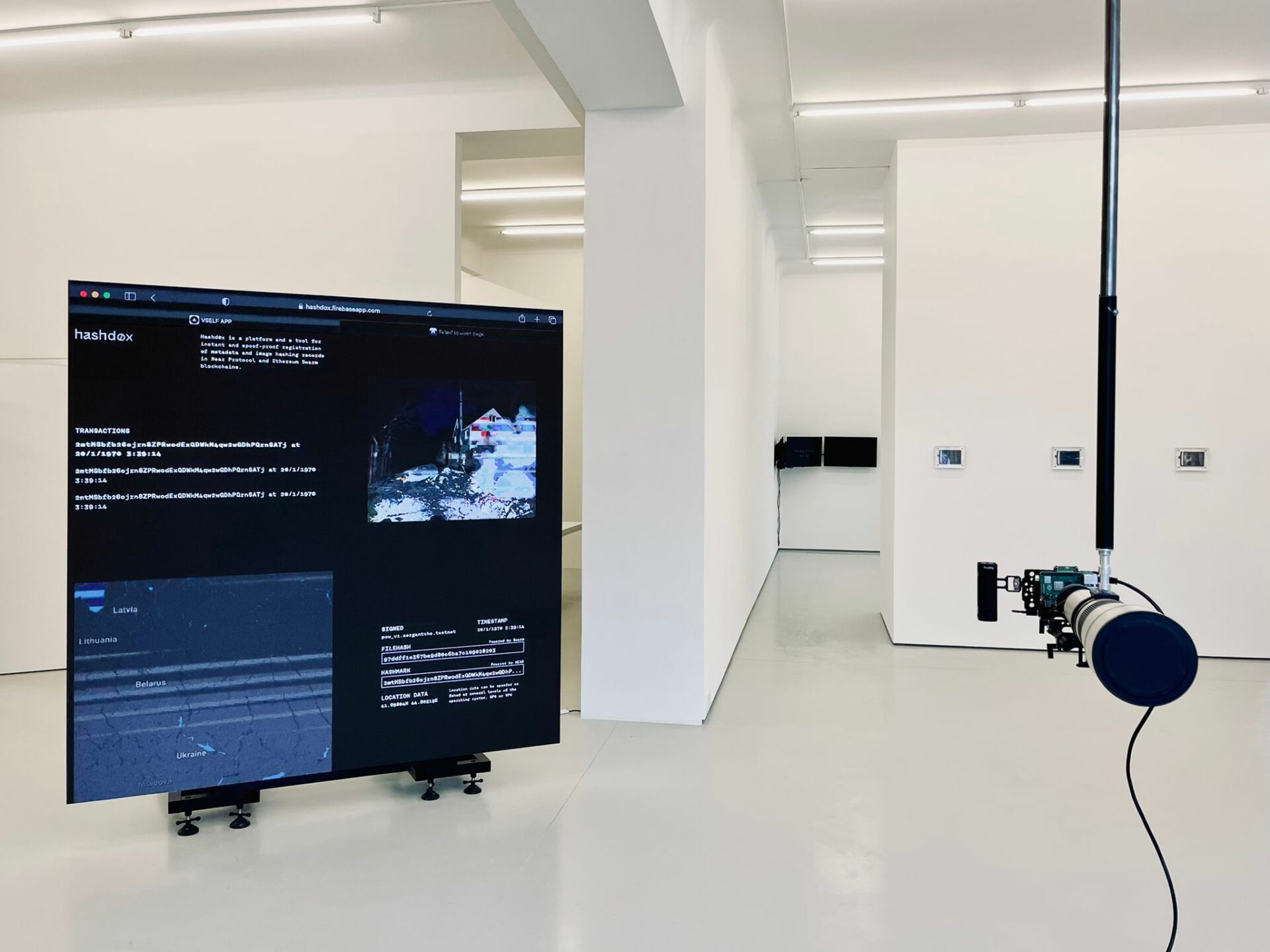
Installation view of Egor Kraft's "Lies, Half-Truths & Propaganda [The Bad, the Worse, and the Worst], 2022". Courtesy alexander levy.
Art filters our everyday life and reality, and it isn’t easy to get rid of its socio-political dimensions
Was there ever any rivalry or tension between the two of you when it comes to curating art and artists for your respective galleries?
TL: My son and I have different gallery programs, which means that we each work for ourselves and have our own focus – that’s how it should remain overall.
AL: I always could implement my ideas and those of my artists – even if they were not immediately obvious to my father. But he always gave me every opportunity to do so.
Concerning the gallery program, which is very different in terms of content, where do father and son nevertheless meet in artistic discourse or approach?
TL: The artists I represent – especially Meret Oppenheim, Man Ray, Dieter Roth, and Daniel Spoerri – are equally loved by my son. They, too, are so-called “idea artists” or conceptual artists.
AL: Yes, with Meret Oppenheim and Daniel Spoerri, it’s less about the craft than about the artistic movement, the ideas, and views they embody.
Both galleries are known for showing works that interrogate social and political themes. Beyond art, what place did politics and social issues have in your personal lives that has transferred over to how you run your galleries?
TL: Art filters our everyday life and reality, and it isn’t easy to get rid of its socio-political dimensions. Even if, at first, the purely sensual-aesthetic perception can be something very personal.
AL: There are certainly issues today that can no longer be ignored, such as gender equality, BIPOC empowerment, and the digitalization of art.
As we saw in parts during Art Düsseldorf, there are many vital positions in contemporary art coming out of Germany. How does this heritage and cultural history inspire your work as gallerists?
TL: Most of the artists I represent don’t come from Germany – I don’t think this point of view is crucial. Nevertheless, there are, of course, national discourses in which artists are also rediscovered. Take Werner Berges for an example – a pioneer of German Pop Art who achieved his fame in the 1960s and 70s, then fell out of sight. Today he is once again the focus of the rediscovery and recognition of the so-called “German Pop.”
AL: The national context is not relevant for me as a gallery owner, yet it can become an artistic discourse for the artist.
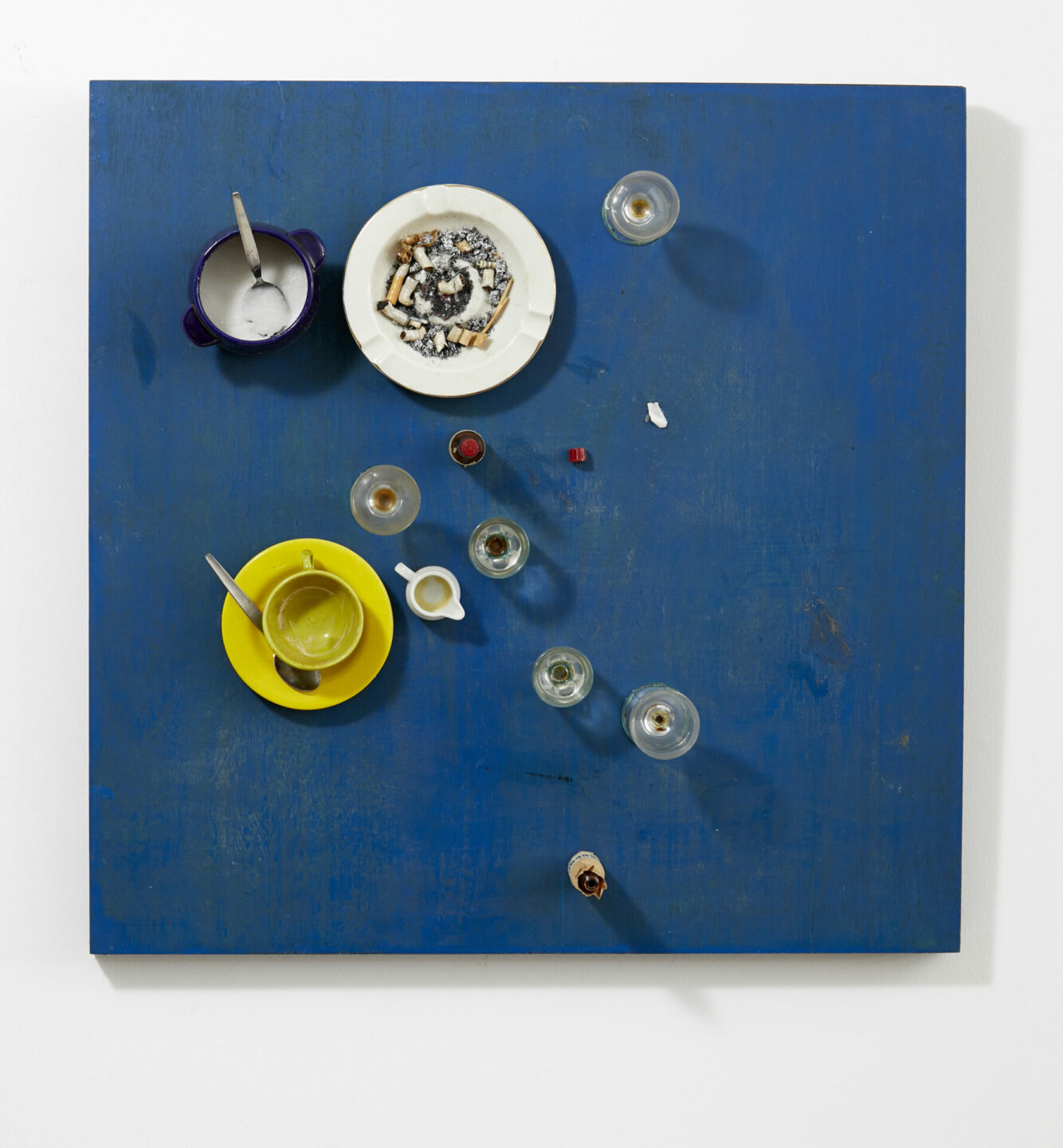
Daniel Spoerri. "Tableau piége", 1972. "Restaurant Spoerri", 1972. Courtesy of LEVY Galerie.
How did your respective galleries adapt to the pandemic?
AL: During the Corona-related closure of galleries, we concentrated on the fundamental structures of our gallery: the (digital) mediation of art to our collectors and cultivating our contacts – and many collectors also had time and bought art. So we were lucky to survive these years well.
Can you walk me through the artists you chose for the inaugural exhibition in your new shared space? Were there any conflicts or disagreements about the artists?
TL: I chose Meret Oppenheim, Man Ray, and Daniel Spoerri because they are the foundation of my gallery, and I have a long-standing collaboration with them. Through them, I came to art, and they have influenced many artists to this day. I worked with Oppenheim from as early as 1978 until her death, and with Spoerri since 2000. And in 1969, as a 20-year-old, I met the then 79-year-old Man Ray in Paris – an encounter that significantly influenced my decision to open a gallery a year later.
AL: We didn’t choose a specific artistic position for the opening exhibition; We had already selected Egor Kraft for some time. However, due to the current war situation in Ukraine, the Russian-Austrian artist has completely redeveloped his concept.
Isn’t it very brave to open new big spaces in these times – especially with the post-COVID situation and the war?
TL: We waited five years for the new spaces. And now they have come to us, and we said yes. So it just goes on and on.
And can we expect at some point that a LEVY/alexander levy gallery may open in a completely different place?
TL: I have already had a gallery in Paris and Madrid in parallel. It depends mainly on the local partners. In my experience, it isn’t easy because being a successful gallery owner is essentially a personal business.
AL: So I think it’s a wonderful idea; I’d be attracted to have another gallery somewhere else.
Chris Erik Thomas is the Digital Editor of Art Düsseldorf. They work as a freelance writer and editor in Berlin and focus primarily on culture, art, and media. Their work can also be seen in Highsnobiety, The Face Magazine, and other publications.